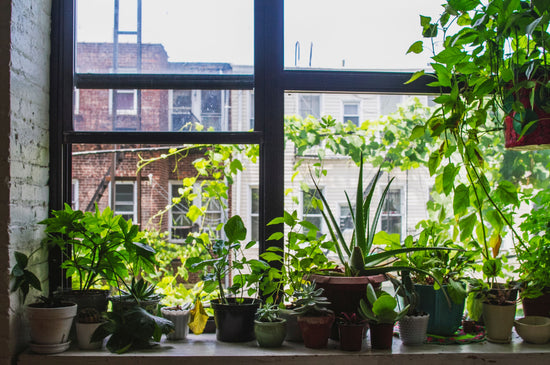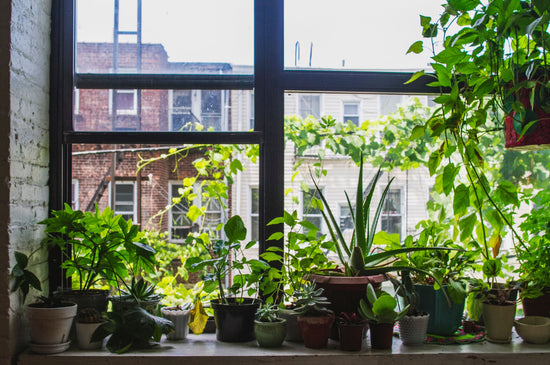Winter-Proof Your Indoor Jungle: Secrets for Lush Houseplants All Season Long
Winter can be a tough season for your houseplants. Reduced light, lower humidity, and fluctuating indoor temperatures create a challenging environment for your indoor jungle. However, with a few practical strategies, you can ensure your plants thrive through the colder months. Whether you’re caring for resilient varieties like the Lifesaver Cactus or tropical favorites like the peace lily, this guide will help you winter-proof your greenery for a lush, vibrant display.
Why Winter Challenges Your Houseplants
During winter, the lack of sufficient sunlight, dry indoor air, and changes in temperature put stress on your houseplants. These factors often slow growth and make them more susceptible to pests and diseases. Understanding how these conditions affect plants like the Huernia zebrina, philodendron, and spider plant chlorophytum comosum is the first step in ensuring their health.
- Reduced Sunlight: Shorter days mean your plants, particularly light-loving varieties such as the zebra-striped succulent, might struggle to photosynthesize effectively.
- Lower Humidity: Heating systems dry out the air, leaving plants like the zanzibar gem plant craving more moisture.
- Temperature Fluctuations: Drafty windows and proximity to heaters can create unstable conditions, stressing even hardy plants like the snake plant.
Steps to Winter-Proof Your Houseplants
1. Master the Art of Watering
Winter calls for a more measured approach to watering. Overwatering is one of the main reasons houseplants fail in winter. Check the soil moisture before watering—if the top inch is dry, it’s time to hydrate. Plants like the Lifesaver Plant or christmas cactus require less water in cooler months due to slower growth. Always ensure proper drainage to avoid root rot.
2. Boost Humidity Levels
Tropical plants like the philodendron or peace lily thrive in humidity, which drops significantly indoors during winter. Increase moisture levels by:
- Placing a humidifier near your plants.
- Grouping plants to create a microclimate.
- Setting pots on trays filled with water and pebbles to add ambient moisture.
3. Maximize Light Exposure
Position plants like the Huernia Cactus and pothos near bright, south-facing windows, but keep them away from drafts. Rotate plants weekly to ensure all sides receive adequate light. For low-light spaces, consider investing in LED grow lights, which can help your succulent with unique blooms and other light-demanding plants thrive.
4. Control Temperature and Drafts
Keep your houseplants in a stable environment, ideally between 65°F and 75°F. Avoid placing them near heaters, fireplaces, or drafty windows. Use thermal curtains or draft stoppers to protect plants like the zamioculcas plant or indoor succulent plant from sudden cold exposure.
5. Prevent Pest Infestations
Pests like spider mites and fungus gnats become more common during winter. Regularly inspect leaves, stems, and soil for signs of infestation. For issues, wipe leaves with a damp cloth and use organic insecticidal soap. Quarantine affected plants immediately to prevent spreading.
6. Adjust Feeding Schedule
Most houseplants go dormant in winter and don’t need as much fertilizer. Resume regular feeding in spring when growth picks up. If you’re caring for flowering plants like the star-shaped flower cactus, a diluted fertilizer once a month can support blooms.
Best Plants for Winter Success
Some plants are naturally more resilient to winter conditions. Here are a few that can withstand the season with ease:
- Snake Plant: Known for its durability and minimal care needs, the snake plant is a winter warrior.
- ZZ Plant: Its drought tolerance and adaptability make it perfect for winter care.
- Pothos: Thrives in low light and needs infrequent watering, making it ideal for beginners.
- Christmas Cactus: Adds a festive touch with winter blooms and tolerates indoor conditions well.
- Spider Plant: Highly adaptable and forgiving, it’s an excellent choice for any indoor space.
Preparing for a Healthy Spring
Winter-proofing doesn’t just protect your plants; it also sets the stage for robust growth in spring. By maintaining consistent care, you’ll ensure your houseplants bounce back stronger when warmer weather arrives. Clean their leaves to maximize light absorption, and consider repotting plants like the compact succulent for containers if they show signs of being root-bound.
FAQ
How often should I water houseplants in winter?
Water only when the top inch of soil feels dry. Plants grow slower in winter, so they need less water.
What’s the best way to increase humidity for houseplants?
Use a humidifier, group plants together, or place them on a pebble tray with water to boost humidity.
Can I fertilize houseplants during winter?
It’s best to avoid fertilizing most houseplants during their dormant phase. Resume feeding in spring when growth accelerates.
Why are my plant’s leaves turning yellow in winter?
Yellowing leaves can be a sign of overwatering, low humidity, or insufficient light. Adjust care as needed based on the plant’s needs.
What’s the easiest plant to care for in winter?
The snake plant or zz plant are excellent options due to their ability to thrive in low light and with minimal watering.





